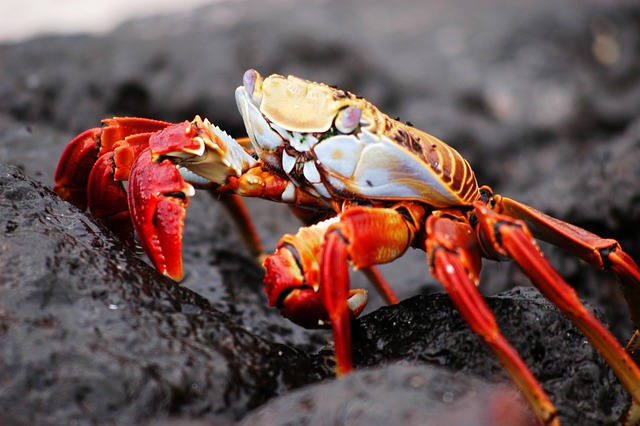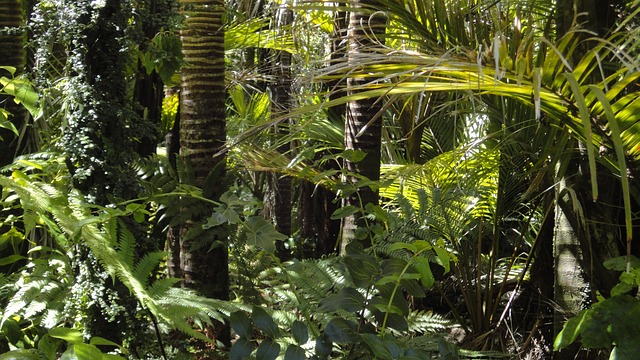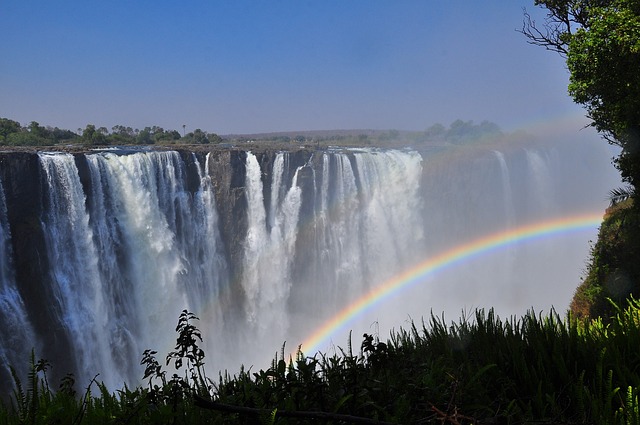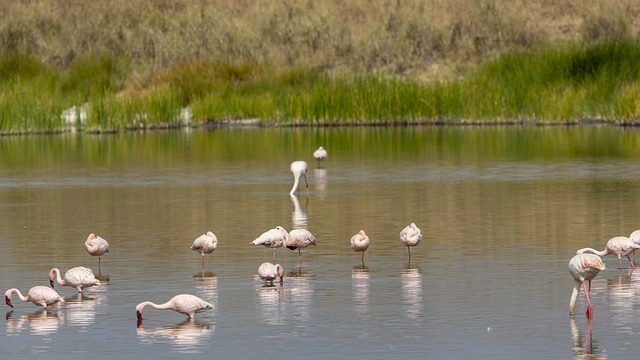Galápagos Islands: Tortoises and Tan Lines – The Ultimate Wildlife Party!
Nestled about 560 miles west from the coast of Ecuador and straddling the equator lies the mesmerizing Galápagos Islands, an archipelago of volcanic origin that hosts a quirky ensemble of wildlife. This unique cluster of islands, with its bizarrely beautiful creatures, has long fascinated travelers and scientists alike — so much so that it spurred the young Charles Darwin on his visit in 1835 to develop his groundbreaking theory of evolution by natural selection.

The islands offer a fascinating itinerary for island-hopping adventurers, each island presenting its particular tapestry of life. From blue-footed boobies performing their comical mating dances to the solemn giant tortoises grazing placidly, the Galápagos offer up-close experiences with nature that are often as amusing as they are awe-inspiring. Sailing from one island to another, visitors can navigate the natural nooks where evolution has crafted life in its own peculiar image.
Venture underwater, and one discovers the ‘Marine Melodies’ where dolphins harmonize and whales choreograph their watery waltzes. Above water, one can encounter the famed Galápagos finches, whose beaks are living lessons in adaptability. These islands are an unmatched natural laboratory, beautifully balanced on the equator, that beckons equally to the wild-hearted wanderer and the methodical mind of science.
Key Takeaways
- The Galápagos Islands are a volcanic archipelago teeming with unique wildlife.
- They provide a living exhibit of evolution in action, ideal for both leisurely exploration and scientific discovery.
- Marine and land habitats in this equatorial paradise offer diverse interactions with nature.
Darwin’s Playground

The Galápagos Islands are where Charles Darwin collected critical observations leading to the development of his evolutionary brainchild. Here, finches and tortoises weren’t just another critter; they were supermodels flaunting traits worthy of scientific superstardom.
Evolutionary Milestones
Darwin hit the ecological jackpot upon his 1835 visit to these isolationist islands. He observed a variety of species that were unique, or endemic, to the area. Among these were the Galápagos tortoises, which through a slow-motion catwalk of evolution, showcased distinct shell shapes depending on their island residency. These reptilian behemoths solidified the Galápagos as a living museum of evolutionary milestones, offering snapshots of adaptive progress in action.
- Finches: Oh, the finches! With beaks that could make a toolset jealous, each variation was a testament to a specific ecological niche.
- Marine Iguanas: These sea-going reptiles are a one-of-a-kind phenomenon. They have traded the tree-hugging life for ocean swims, and they sneeze salt as a quirky party trick.
Natural Selection Superstars
Natural selection has a fan club on the islands, with every creature seemingly striving to be the poster child. Take the flightless cormorant for instance. With wings that are to flying what tricycles are to the Tour de France, these birds are a nod to practicality over pageantry. They’ve traded the blue skies for the briny deep, turning their attention to underwater feats.
- Galápagos Tortoise: Shells vary from volcano-shaped to saddle-backed, an adaptation that screams, “My neck is long, and I need to munch!”
- Flightless Cormorant: Their wings are about as useful as umbrellas in a submarine, but when it comes to swimming, they’re Olympians.
Each creature is a walking, swimming, or sneezing testament to what happens when nature fancies a bit of trial and error and comes up with some seriously wacky yet wonderful life forms.
Island-Hopping Itinerary

In the whimsical world of the Galápagos, plotting your island-hop can be a blend of meticulous planning and the sheer joy of the unexpected. Whether you’re playing peekaboo with playful sea lions or tiptoeing around iguanas, each island offers a uniquestage with a kaleidoscope of experiences.
Major Islands Marvels
First on the roster is Isabela, the belle of the ball and largest island in the archipelago. She’s a real showoff with her whopping six volcanoes. Let’s not forget Santa Cruz, bustling with the kind of nightlife only tortoises can bring to the party. If they’re too sedate for your taste, Fernandina might tickle your fancy, flaunting its untamed, volcanic landscape. On the eastern side, San Cristobal whispers tales of Darwin and pirates, while Santiago flexes its lava-formed muscles to hikers looking for a challenge.
- Isabela: One can indulge in snorkeling in the tinted waters of Tagus Cove.
- Santa Cruz: A must-visit is the Charles Darwin Research Station, crucial for conservation efforts.
Conservation Corners
No hop is complete without a deep dive into the conservation efforts. After all, we don’t want to be naughty guests at Nature’s soiree. The Galápagos National Park dress code? Respect and awe. This park is the grand steward of the islands, squiring you through a success story of ecological restoration. It’s where mankind and nature do the tango without stepping on each other’s toes.
- Galápagos National Park: Get a behind-the-scenes look at nature’s comeback kids, like the Galápagos giant tortoise, which are steadily repopulating thanks to the park’s efforts.
Wildlife Wonders
The guest list of these island shindigs reads like an exotic Who’s Who. From the dapper blue-footed booby at the water’s edge to the misunderstood endemic sharks, who really aren’t as terrifying as they’re written. On the furrier side of things, one might bump into marauding bands of sea lions, who’ve never heard of personal space but are excellent at photobombs.
- Isabela & Fernandina: Spot whales and dolphins putting on a show just offshore, while flightless cormorants strike a pose for the curious onlooker.
- Santa Cruz: Say ‘hello’ to the bashful flamingos and cavort with mischievous marine iguanas, the punks of reptile society.
Crafting your Galápagos itinerary is akin to juggling ecological jewels: a mix of marvels, conservation, and wide-eyed wildlife encounters await. Remember, spontaneity is the spice of travel – leave room for impromptu invitations from Mother Nature herself!
Navigating Nature’s Nook

When one embarks on an adventure to the Galápagos Islands, they are greeted by the Pacific Ocean’s embrace and a symphony of wildlife. But before they can whisper sweet nothings to a blue-footed booby or kayak with the sea lions, they need to iron out some crucial logistics.
Practical Plannings
First thing’s first: getting there. Travelers can catch flights from Quito or Guayaquil to lay their feet on the islands. They will land at one of two main airports, where seals might not carry their luggage, but the adventure begins. If they opt for a luxurious stay, Hotel del Parque in Guayaquil offers a plush bed before they hop over to Galápagos.
Ah, the blissful ports! Moving from mainland Ecuador to the fantastical archipelago requires a leap from ports that launch ships with names that might as well be sea shanties. Once there, visitors should prepare to pay the Park Fee—a pretty passport for preserving paradise. It’s not just a fee; it’s a high-five to Mother Nature!
-
Airports to know:
- Mariscal Sucre International Airport, Quito
- José Joaquín de Olmedo International Airport, Guayaquil
- Seymour Airport, Baltra Island
- San Cristóbal Airport, San Cristóbal Island
-
Suggested lodging:
- Hotel del Parque: A touch of elegance in Guayaquil.
Weather Whimsy
Upon arrival, they’ll quickly notice that the Weather plays a game of chance—sunny skies or a sudden drizzle. The Pacific Ocean whispers its secrets through the winds, and savvy voyagers come clutching layers.
Some visitors might tussle with Motion Sickness on choppy waters, so it’s wise for them to pack their favorite remedies and magic bands. Others might prefer to dance with the waves, accepting the ocean’s unpredictable rhythm.
- Weather essentials:
- Sunscreen: Slap it on thick!
- Rain jacket: For the sneaky squalls.
- Motion sickness aides: Ginger chews, acupressure wristbands.
Funny how they say “getting there is half the fun,” but in the Galápagos, it’s just the cheeky prologue to Mother Nature’s main act.
Marine Melodies and More

The Galápagos Islands serenade their visitors with the symphony of diverse marine life that animates its crystal waters, while the shorelines offer sandy solos of tranquil beauty, a true sensory feast.
Underwater Utopia
In the submerged realm of the Galápagos, marine iguanas bask in the sun’s embrace before taking a dip, showing off their seaweed-munching skills. Snorkelers may giggle through their mouthpieces as these prehistoric swimmers resemble grumpy old men in scaly suits. Meanwhile, the flashy Galápagos penguin – the avian speed demon of the equator – flutters through currents possibly seeking a racing challenge. Divers might find it amusing that these tuxedoed torpedoes often look bewildered, as if questioning their GPS navigation skills.
Marine life encountered while diving or snorkeling:
- Marine Iguana: Sunbathing aficionado and submarine herbivore
- Galápagos Penguin: The sea’s quirky avian racer, often seen in a waddle or glide
- Sea Lion: Ocean’s playful pup often spotted performing aquatic acrobatics
Beaches and Breeze
On land, beaches form the white sand stage for the sea lions‘ performance, sprawling lazily, commanding the spotlight with their sandy siestas. Lulled by the lapping waves and the ocean currents‘ eternal lullaby, one wouldn’t be surprised to see sea lions nodding to invisible music. Beachgoers can’t help but be amused by their sunbathing neighbors, likely hoping their beach bodies go unnoticed amidst these blubbery beach bums.







